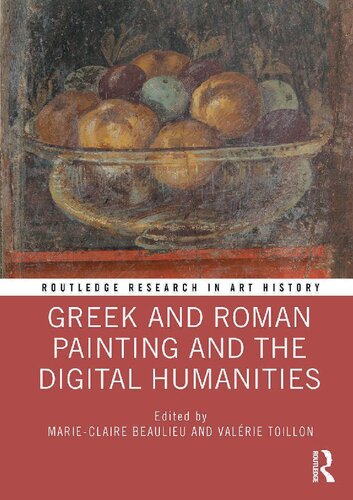

Most ebook files are in PDF format, so you can easily read them using various software such as Foxit Reader or directly on the Google Chrome browser.
Some ebook files are released by publishers in other formats such as .awz, .mobi, .epub, .fb2, etc. You may need to install specific software to read these formats on mobile/PC, such as Calibre.
Please read the tutorial at this link: https://ebookbell.com/faq
We offer FREE conversion to the popular formats you request; however, this may take some time. Therefore, right after payment, please email us, and we will try to provide the service as quickly as possible.
For some exceptional file formats or broken links (if any), please refrain from opening any disputes. Instead, email us first, and we will try to assist within a maximum of 6 hours.
EbookBell Team

4.0
66 reviewsThis volume is a groundbreaking discussion of the role of digital media in research on ancient painting, and a deep reflection on the effect of digital media in opening the field to new audiences.
The study of classical art always oscillates between archaeology and classics, between the study of ancient texts and archaeological material. For this reason, it is often difficult to collect all the data, to have access to both types of information on an equal basis. The increasing development of digital collections and databases dedicated both to archaeological material and ancient texts is a direct response to this problem. The book’s central theme is the role of the digital humanities, especially digital collections such as the “Digital Milliet”, in the study of ancient Greek and Roman painting. Part one focuses on the transition between the original book version of the Recueil Milliet and its digital incarnation. Part two addresses the application of digital tools to the analysis of ancient art. Part three focuses on ancient wall painting.
The book will be of interest to scholars working in art history, classics, archaeology, and digital humanities.